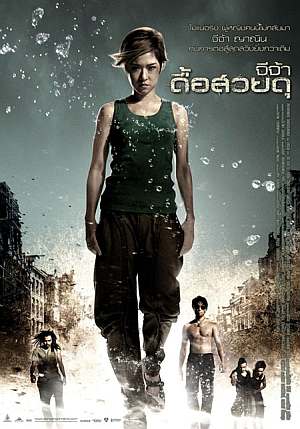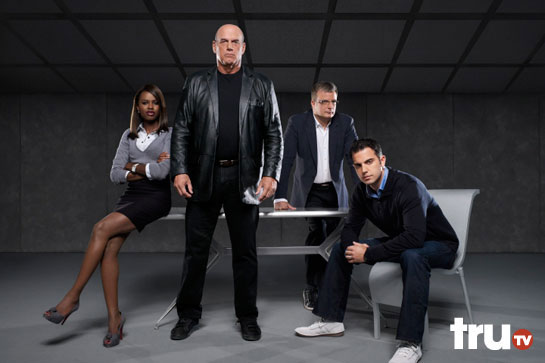TC’s Ten Best Films of 2009

Movies seen theatrically in 2009: three. Yes: you could count then on the fingers of one hand, while still hanging on to your large popcorn. This continues a trend noted in last year’s review, though was exacerbated by us moving house in the middle of the year. As well as the experience occupying us and then leaving us drained of energy for the summer blockbuster season, our new location doesn’t have quite the same easy access to cinemas. Though two of the three movies did make it into the top ten – the other being Avatar – I will also admit that four of the listed films arrived in TC Towers, shall we say, in unofficial ways.
Still, when the top five for the year included not only Avatar, but also Transformers 2 and Twilight: New Moon, Hollywood largely has itself to blame for my absence. But since overall American box-office was up 10% on 2008, and cracked the ten billion dollar mark for the first time, I doubt they noticed. However, I also think this does prove that any claims the downloading of movies is killing the industry are clearly nonsense, just as the music business somehow managed to survive audio-cassettes.
As usual, links go to the most appropriate review, which may be here or may be on GirlsWithGuns.org, and I am limiting myself for the purposes of this list, to movies that got their first North American release in 2009. But here’s also a list of films seen in the past, which might have merited cond for a previous year’s top ten (having been rated B or better]. Lights in the Dusk, Vantage Point, The Memory of a Killer, In Bruges, Let the Right One In, The Wrestler, The Insurgents, Singh is Kinng, Ils, Black Book, Traitor, Fermat’s Room, King Arthur, Stuck, El Rey de la Montaña, Man on Wire, The Strangers, Let Him Have It, Princess Aurora
10. Raging Phoenix
Following up on Chocolate, which made last year’s list, Jeeja Yanin proves that when it comes to action-heroines, the Thais have it. Though not quite as “untainted” [in the sense that this time, the lead’s undoubted talents were more obviously enhanced by some wirework], the action was gloriously hard-hitting, in particular the final confrontations with the scary Roongtawan Jindasing, whom Chris was convinced was a man. The clash of power and flexibility was a joy to behold.
9. Ghost Image
Initially seeming as little more than a lame rip-off of The Ring – a haunted videotape, not seen that before – this managed to get past that, and deliver a genuinely creepy effort, that had a solid script and performance that made it credible. The ghost story has been one of the most over-mined genres of recent years [and the success of Paranormal Activity means that is likely to continue in 2010], but Ghost Image proved that there is still potential for fresh and interesting angles on the area.
8. Monsters vs. Aliens
The trailers didn’t do this justice – it looked like another in the apparently endless line of formulaic CGI animated movies churned out by Hollywood. However, that hid some smart writing, which elevated the film well above its competitors e.g. Bolt, and delivered a loving throwback to monster movies of the 50’s and 60’s, both in the West and Japan. Enjoyable for kids of all ages, this never forgot that the most important point of entertainment, is to actually be entertaining.
7. The Hurt Locker
That is also important for this film, which succeeded where many previous attempts to make a movie centred on the Iraq conflict have failed. It didn’t bother taking sides, and there was no discussion about whether the bomb-disposal unit should be there. They were, and this concerned their efforts to survive, in a world where death conceivably lurked behind every pile of rubble or with each approaching bystander. With tension amped up to 11, it was the year’s most highly-caffeinated movie.

6. Zombieland
Continuing to show that there’s life in the old undead yet, this was probably less a true zombie movie, than a road movie set against a backdrop of shambling flesheaters. Certainly self-aware, but at no time sinking into self-parody [there’s going to be a Scream 4 coming out? Really?], and with four beautifully-drawn central characters, each possessing their own quirks and foibles. Add in an all-you-can-shoot zombie bloodbath at the end, and you’ve got another good entry in the reborn genre.
5. Star Trek
The term “reboot” gets thrown about a lot in Hollywood, and the results have been variable, shall we say. However, this one worked very nicely, managing to return to the two-fisted style of the classic series, while still respecting the original (not least in what was probably the year’s best cameo). They got the casting just about spot-on too, with the actors chosen credible as young versions of the well-loved characters. While I am still not entirely sure about the whole Uhura-Spock thing, this was still a fine re-start to the franchise.
4. The Machine Girl
This lurid tale of betrayal, deep-fried limbs and mechanically-enhanced revenge painted the walls red, at the kind of firehose levels of blood pressure only ever seen in Japanese splatter movies. OTT excess is all the better, when done with a perfectly-straight face, and that’s what we have here. It hits the ground running with an opening sequence (below) that can only be described as berserk, and hardly pauses for breath the rest of its 96 minute running time. If you saw only one movie featuring drill bras last year, this was probably it.
3. District 9
It’s interesting to compare this to Avatar. Both films are about a human who is sent into an alien race, initially with malevolent intentions, but he comes to realize that they are not quite as painted, and he eventually [spoiler alert] becomes one of them [end spoiler alert]. District 9, however, managed to do it with a great deal less ham-handed bludgeoning of the audience, even if the apartheid symbolism here was kinda obvious. Technologically, it was a seamless meshing of CGI – you literally could not see the join – and it was also among the most credible depictions of what might happen when/if we finally have our first encounter.

2. Princess
Denmark is not really regarded as a hot-bed of animation, but this piece of work certainly made up for in impact anything that it lacked in mind-blowing technical quality. Truly a film which could only be done in animation [due to some truly shocking scenes involving the very young child at the center of things], it packed an emotional wallop far greater than all the tentacle rape flicks ever to come out of Japan, and uses live-action flashbacks and fantasy sequences, pulling the viewer in, to the point where the wallops which the movie then delivers have all the more tragic impact.
1. Martyrs
After a stream of highly-touted foreign horror movies that failed to live up to the hype. this one finally delivered the goods on all levels. While not skimping on the gore, with some of the nastiest violence to come across the screen, it was the fact that there was more than sheer psychopathy at work which made it disturbing. The perpetrators truly believed what they were doing was entirely justified, believing the ends justified the means ( I imagine the Nazis probably thought similarly). The degree of man’s inhumanity to man – or woman to woman – shown here can only be admired, in an appalling sort of way.


